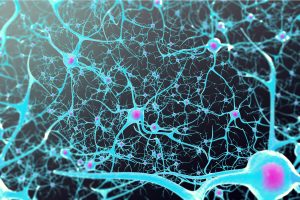A s the development of baby’s brain starts, there is a burst of synapses (connection between neurons to send or receive signals). Now, during puberty and childhood ages usually, the brain begins pruning those synapses to limit their numbers to ensure that different areas of the brain can develop particular functions, also to avoid being overloaded with stimuli. On the other hand, new research suggested that in autistic children, this process goes abnormal, which means the pruning process has not been appropriately initiated and this results in leaving an excess of synapses in some parts of the brain.
s the development of baby’s brain starts, there is a burst of synapses (connection between neurons to send or receive signals). Now, during puberty and childhood ages usually, the brain begins pruning those synapses to limit their numbers to ensure that different areas of the brain can develop particular functions, also to avoid being overloaded with stimuli. On the other hand, new research suggested that in autistic children, this process goes abnormal, which means the pruning process has not been appropriately initiated and this results in leaving an excess of synapses in some parts of the brain.
Usually, the behaviors that have observed in autistic children are mainly, repetitive behaviors, difficulties in communications, and poor level of social interaction. Now according to the results from researches carried out in previous years, the autistic brains have an abnormal amount of ‘synapses,’ it is also hypothesized based on earlier studies that this excess amount of synapses are associated with brain dysfunction.
If the development of the child is progressed normally, the synapse formation process has gradually moderated. During the infancy, the process of synapse formation is highly active, but later it has balanced through the process of pruning of unnecessary cells that is also termed as “Autophagy.” Now, as these synapses have formed in different regions of the brain including cortex, this is the region from where the autistic behaviors have derived. In other words, if the synapses have not appropriately pruned, there is a risk of suffering from autism.
Autism is a struggling mystery, a complex blend of genetic and ecological factors and one piece of this puzzle that has established in recent years is a biochemical run called the mTOR, which is the primary signaling molecule in the process of “autophagy.” It has concluded by researchers that overproduction of mTOR initiates abnormal growth of synaptic cells, which is the root of autism development in infants.
“A 2014 study by Guomei Tang et al. in the journal Neuron showed that mice that are genetically altered to have overactive mTOR also have reduced dendritic spine pruning, blockade of autophagy, and increased autism-like behaviors.”
If there is overactive mTOR, the brain cells lose their “self-eating” property, and a team lead by Guomei Tang further found that without this ability brain of mice models had pruned quite poorly along with the surplus amount of synapses. The team also found that by administrating Rapamycin (a mTOR inhibiting drug), a normal synaptic pruning and autophagy can be restored because, in almost all of the subjects of autism analyzed in that research, there was found a significant amount of overactive mTOR.
The mTOR pathway is in focus now, and it seems that further screening of mTOR will provide some more features about autism and mTOR pathways. It has expected that by normalizing these pathways can be of great help in order to treat abnormal autophagy and other aspects of autism. Moreover, according to the researchers, the success of Rapamycin shows that it will bring some major paradigm shift in the field of therapies given to autism patients. Besides, as other natural remedies with similar structural analogs as that of Rapamycin also exist in nature, therefore, directed bioprospecting of these species can be helpful in yielding a less toxic drug that can be helpful in normalizing of autophagy process and pruning of those unwanted synapses.
